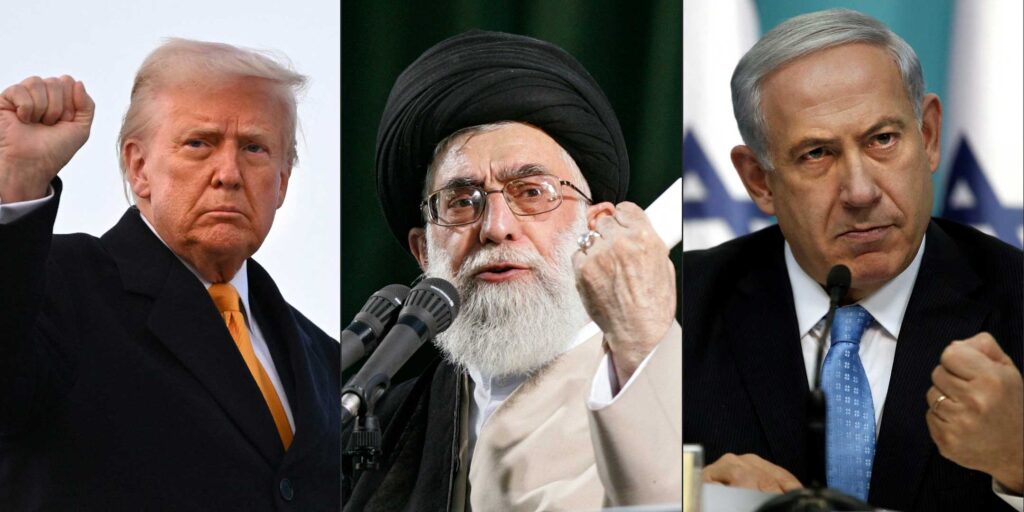Understanding the Tensions Between Iran and the United States
The political landscape between Iran and the United States is known for its complexity and volatility. Recent comments by former U.S. President Donald Trump have stirred the pot once again, intensifying an already sensitive and multifaceted situation. As Iranian officials respond, there are chants of ‘Death to America’ echoing the sentiment of the masses within Iran. Understanding the underpinnings of this confrontation requires a deeper look into the historical, political, and cultural factors at play.
Background of US-Iran Relations
Iran and the United States have had a complicated relationship for decades. This animosity can be traced back to several key historical events that have shaped diplomatic interactions:
- The Iranian Revolution of 1979: This pivotal moment marked a significant shift in Iran’s political climate, leading to the establishment of the Islamic Republic and culminating in the deterioration of U.S.-Iran relations.
- Iran Hostage Crisis (1979-1981): The storming of the U.S. Embassy in Tehran and the holding of 52 American diplomats and citizens hostage for 444 days further strained relations.
- The Iran-Iraq War (1980-1988): The U.S.’s support for Iraq during the conflict added to the tensions.
- Economic Sanctions: A continuous cycle of sanctions has exacerbated economic and political pressures, significantly affecting Iran’s economy and the lives of its citizens.
These historical tensions set the stage for ongoing grievances, making today’s diplomatic exchanges particularly fragile.
The Impact of Trump’s Remarks
Donald Trump’s remarks have once again brought Iran-U.S. relations to the forefront of global politics. While not new to controversy, his statements have often been a catalyst for renewed anger, causing ripple effects that reach far beyond political circles.
Inflaming Public Sentiment: The chants of ‘Death to America’ highlight the entrenched frustrations among many Iranians. While these chants reflect a subset of public sentiment, they symbolize deeper, widespread discontent and nationalism that has been fueled by years of real and perceived injustices.
Government Response: Iranian leaders have responded predictably to Trump’s combative rhetoric, with statements emphasizing resistance and resilience. This is part of a broader strategy of demonstrating internal strength and unity in the face of external adversarial pressure.
Why Do These Chants Continue?
To fully understand the repeated cries of ‘Death to America’ is to delve into the cultural psyche of Iran. These slogans are more than just a reflexive reaction to Western policies; they are steeped in a rich tapestry of historical grievances and cultural assertions.
Cultural Identity: For many Iranians, these chants are a form of resistance—a declaration that underscores their sovereignty in the face of foreign intervention.
Political Tool: The Iranian government capitalizes on these expressions of frustration as a means of consolidating national unity, often using them strategically to divert attention from domestic issues.
Media Influence: The repetition and broadcast of these images reinforce the narrative of an us-versus-them mentality, ingraining these sentiments deeper within the societal framework.
The Broader Implications
These ongoing tensions have wide-reaching implications, extending far beyond Iran and the U.S. themselves. The geopolitical ramifications dictate much of the Middle East’s political activity and influence global economic stability.
Regional Instability: The animosity between Iran and the U.S. impacts neighboring countries, complicating alliances and exacerbating regional conflicts such as those in Syria and Yemen.
Global Economy: The uncertainty in U.S.-Iran relations often affects oil prices, as Iran is a major player in global energy markets. Sanctions and rhetoric instability can lead to volatility in energy prices worldwide.
Nuclear Controversy: One of the most critical issues remains Iran’s nuclear program. Speculations and accusations around nuclear capabilities often lead to international tension and diplomatic strain.
Steps Toward De-escalation
Amidst the heightened tensions, what can be done to pave the way toward de-escalation? The answer lies in careful, patient diplomacy and a willingness to engage in meaningful dialogue.
- Re-establishing Diplomatic Channels: Keeping communication lines open, transparent, and consistent can prevent misunderstandings and promote a path to peaceful resolution.
- Building Confidence: Initiatives that focus on building trust can slowly bridge the vast chasms that exist between the two nations. Confidence-building measures can include cultural exchanges, lifting some economic sanctions conditionally, and regional cooperation initiatives.
- Multi-Lateral Engagement: Involving other significant global powers in negotiations may lead to a framework that is more acceptable to all parties.
Conclusion
Understanding the intricate, historical layers of tension between Iran and the United States is essential for a nuanced perspective on current events. While chants and rhetoric dominate the narrative, the underlying issues are deeply rooted and complex. A forward-thinking approach, characterized by diplomacy and mutual respect, remains key in potentially mending this deeply fractured relationship. As audiences worldwide watch these tensions unfold, the international community continues to hope for a peaceful resolution that respects the sovereignty and dignity of all parties involved.

